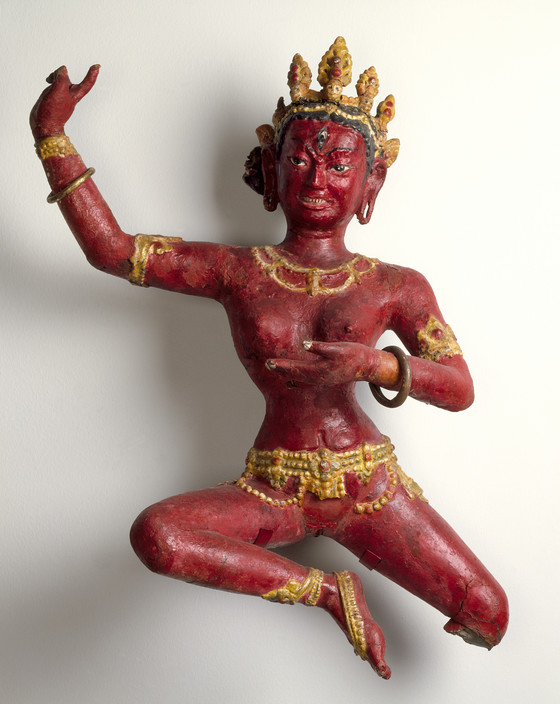Dancing Vajravarahi (Dorje Pagmo)

Please log in to add this item to your gallery.
View comments
No comments have been posted yet.
Add a comment
Please log in to add comments.
Please log in to add tags.
* Nearly 20,000 images of artworks the museum believes to be in the public domain are available to download on this site.
Other images may be protected by copyright and other intellectual property rights.
By using any of these images you agree to LACMA's Terms of Use.
Dancing Vajravarahi (Dorje Pagmo)
Nepal, circa 1250-1420
Sculpture
Modeled clay over an iron armature with cloth and paint; copper bracelets
30 x 28 x 12 in. (76.2 x 71.12 x 30.48 cm)
Anonymous gift in honor of the museum's twenty-fifth anniversary (M.90.195)
Not currently on public view


